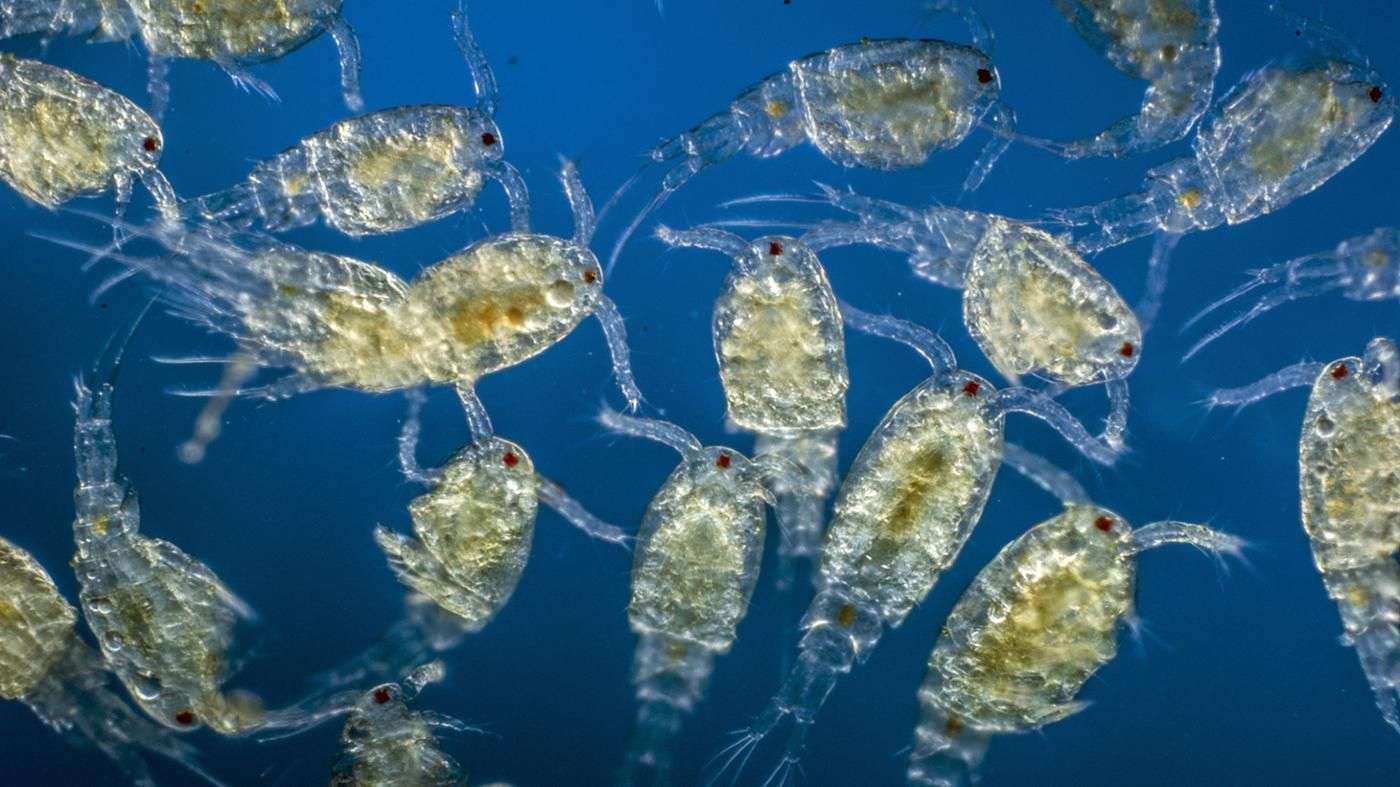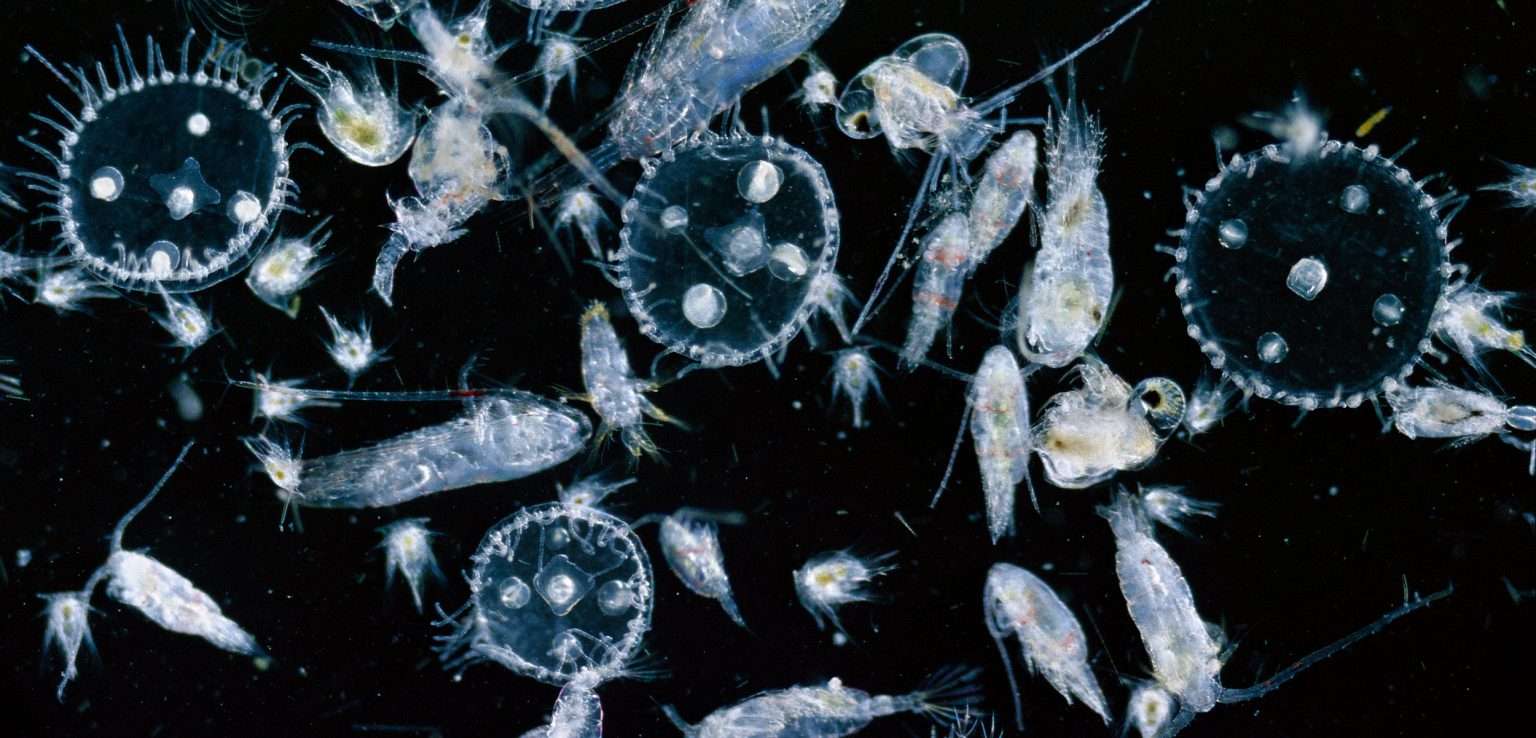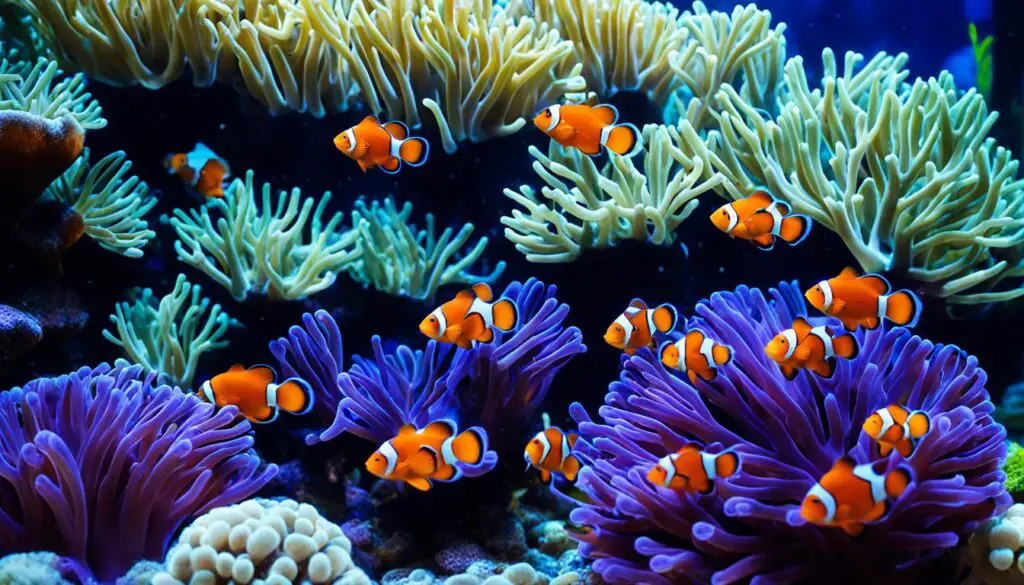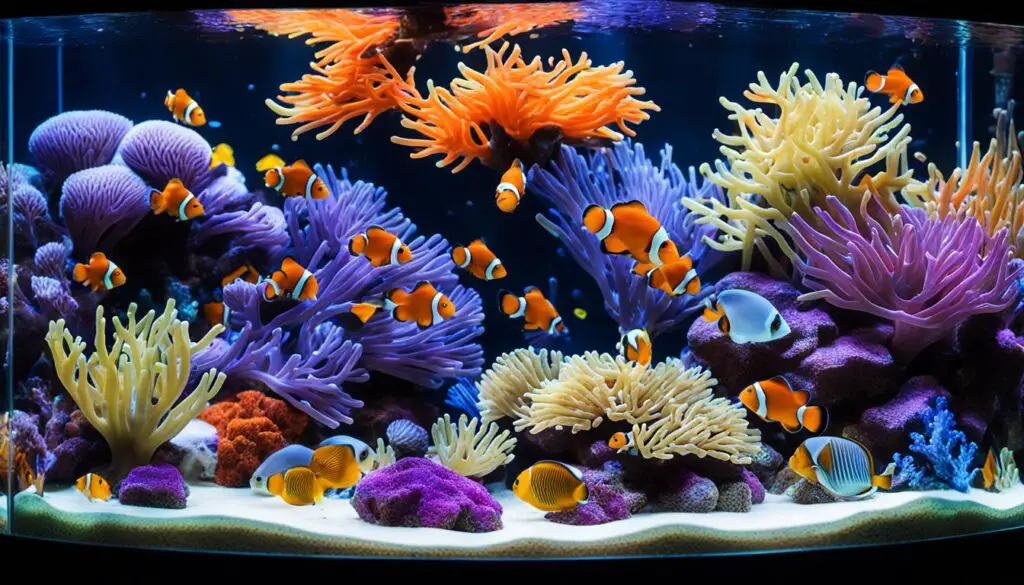Can Plankton Swim Against Current

Introduction
Can Plankton Swim Against Current: The world’s oceans are teeming with life, from massive whales to the tiniest of organisms. Among these microscopic inhabitants are plankton, a diverse group of organisms that play a critical role in marine ecosystems. Despite their diminutive size, plankton exhibit fascinating behaviors and adaptations that have captured the attention of scientists and researchers. One of the most intriguing questions in the realm of marine biology is whether plankton can swim against the currents that often dominate their watery environments.
Plankton comprise a wide array of organisms, including phytoplankton, which are plant-like and responsible for a significant portion of Earth’s oxygen production, and zooplankton, which are animal-like and serve as a primary food source for many marine creatures. These creatures, although often passive drifters in the ocean’s currents, possess remarkable abilities to maneuver in their watery habitats.
As it sheds light on their survival strategies, ecological interactions, and overall impact on marine ecosystems. Plankton must contend with powerful, dynamic ocean currents that can carry them vast distances, impacting their ability to find food, evade predators, and successfully reproduce. Understanding whether plankton can actively navigate against these currents is fundamental to comprehending their place in the intricate web of marine life.

Which plankton Cannot swim against the current?
Holoplankton are organisms that are planktic (they live in the water column and cannot swim against a current) for their entire life cycle.
Among the diverse planktonic organisms populating Earth’s oceans, the majority are passive drifters, unable to actively swim against the relentless currents that dominate their watery habitats. Phytoplankton, for instance, are microscopic, plant-like organisms that form the foundation of the marine food web through photosynthesis.
While they do possess the ability to move vertically within the water column, it is mostly due to their buoyancy control mechanisms, not active propulsion. Similarly, other smaller zooplankton, such as copepods, are also primarily at the mercy of ocean currents. These delicate creatures rely on the flow of water for their dispersal, and though they can exhibit some form of vertical movement for feeding or predator avoidance, they do not possess the strength or mechanisms for sustained swimming against prevailing currents.
Essentially, these planktonic organisms have evolved to thrive within the constraints of their environments, capitalizing on their passive drifting behavior to disperse across vast ocean expanses. Their inability to actively swim against the current is one of the factors that make plankton such a captivating subject of study for marine biologists, shedding light on their unique adaptations to the dynamic and challenging world of the open ocean.
How do currents affect plankton?
Advection by ocean currents modifies phytoplankton size structure at small scales (1–10 cm) by aggregating cells in different regions of the flow depending on their size. This effect is caused by the inertia of the cells relative to the displaced fluid.
Currents play a pivotal role in shaping the distribution, behavior, and survival of plankton in the world’s oceans. These dynamic, constantly moving flows of water exert significant influence on planktonic communities, impacting both phytoplankton (plant-like) and zooplankton (animal-like) organisms. Firstly, currents serve as a means of transportation for plankton, determining their dispersal patterns. In areas of strong, consistent currents, plankton can be carried over vast distances, facilitating the mixing of different populations and potentially leading to genetic diversity within species. However, this dispersal can also expose them to various challenges, such as predation or unfavorable environmental conditions. currents affect the depth distribution of plankton. Upwelling currents, for example, bring nutrient-rich waters from the deep to the surface, promoting the growth of phytoplankton and subsequently supporting zooplankton populations. Conversely, downwelling currents push plankton to deeper, darker waters, where resources are scarcer, impacting their foraging and reproductive strategies.
Moreover, currents influence the diel vertical migration (DVM) of plankton, a crucial survival tactic. Many zooplankton species, for instance, undertake a daily journey to shallower depths during the night to feed on phytoplankton and then return to deeper waters during the day to avoid visual predators. Currents can aid or hinder this behavior, depending on their direction and strength. Finally, the interplay of currents with seasonal changes can also affect plankton, influencing their annual abundance and distribution. Coastal upwelling, driven by winds and currents, promotes the proliferation of planktonic communities, ultimately attracting various marine species, including commercial fish.
Currents serve as both a facilitator and a challenge to plankton in the world’s oceans. They are essential for dispersal, nutrient transport, and the regulation of DVM, yet they also subject these tiny organisms to various risks and uncertainties. The intricate relationship between plankton and currents underscores the vital role of these microscopic organisms in the broader marine ecosystem and highlights the necessity of understanding these interactions to comprehend the complex dynamics of our oceans.
What organisms swim against the current?
Unlike planktonic organisms that drift at the mercy of ocean currents and waves, nektonic animals are large enough and strong enough to control where they swim. Fish are the most biodiverse and numerous nekton, followed by cephalopods. Other nektonic groups include marine reptiles, marine mammals and some crustaceans.
While many marine organisms, including some species of fish, use ocean currents to their advantage for efficient movement, a select group of remarkable creatures can actively swim against these powerful flows. One of the most iconic examples is the salmon, particularly in the context of their extraordinary upstream migration for spawning. Salmon navigate against strong river currents, often traveling thousands of miles to reach their natal breeding grounds, displaying an innate sense of direction and astonishing endurance. Other species, like eels, undertake similar challenging journeys against currents, moving from freshwater habitats to the open ocean and back again for reproduction.
Some marine mammals, such as dolphins and seals, are also adept at swimming against ocean currents. Their streamlined bodies and powerful muscles enable them to navigate through water with precision and strength, allowing them to hunt and travel efficiently even in turbulent conditions. some birds, such as the albatross, harness the power of the wind and use dynamic soaring techniques to move against prevailing air currents, ensuring long-distance, energy-efficient flights across vast ocean expanses. These fascinating examples showcase the diverse strategies employed by various organisms to navigate and thrive within the fluid dynamics of aquatic and aerial environments, revealing the incredible adaptability and resilience of these species.
Are plankton active or passive swimmers?
Plankton are generally passively drifting organisms carried by water movements; examples include bacteria, algae, and small animals. Nekton are actively swimming organisms and so can to a certain extent migrate in the horizontal plane; examples include squid, fish, and some crustaceans.
Plankton, encompassing an immense variety of microscopic organisms, display a spectrum of swimming behaviors, ranging from passive drifting to limited active propulsion. The classification of plankton as either active or passive swimmers largely depends on the specific species, their size, and their adaptations. Phytoplankton, the photosynthetic, plant-like plankton, are predominantly passive drifters. They are at the mercy of ocean currents, unable to actively swim against the flow, although some may exhibit limited vertical movement through buoyancy control mechanisms, allowing them to remain within the optimal light and nutrient zones.
Conversely, zooplankton, the animal-like plankton, exhibit a broader range of swimming capabilities. While many are also passive drifters, some species, like copepods, have evolved mechanisms for limited active propulsion. They use their appendages, such as antennae and thoracic limbs, to generate thrust and control their direction to some extent, though they cannot swim against strong currents for extended periods. The vertical migration of zooplankton is another noteworthy behavior, with these organisms ascending to the surface to feed during the night and descending to deeper, darker waters during the day to evade visual predators.
In essence, the swimming capabilities of plankton are highly variable, shaped by their evolutionary adaptations to the challenges of life in the open ocean. While many are passive drifters, some zooplankton species have evolved mechanisms for limited active swimming, enabling them to exhibit a degree of control over their movement within the water column. The blend of passive and active swimming strategies among planktonic organisms contributes to the intricate dynamics of marine ecosystems, influencing their dispersal, feeding patterns, and interactions with other marine life.
Why do phytoplankton glow when disturbed by the water current?
Bioluminescent algae produces luciferin and luciferase. Luciferase in dinoflagellates is similar to the green plant chemical called chlorophyll. The chemical reaction occurring between luciferin and luciferase is triggered when the bioluminescent algae are disturbed by movement or changes in the environment.
Phytoplankton, microscopic plant-like organisms that form the base of the marine food chain, are known to exhibit bioluminescence when disturbed by water currents or mechanical agitation. This fascinating phenomenon is primarily attributed to their possession of specialized light-emitting structures called bioluminescent organelles or scintillons, a characteristic that sets them apart from other planktonic organisms. When these delicate organisms are stirred or disrupted by water movement, it triggers a series of biochemical reactions within the scintillons.
The key component responsible for this natural light show is a light-emitting pigment called luciferin, which reacts with an enzyme called luciferase in the presence of oxygen. When the phytoplankton are agitated, such as when a predator approaches or due to water turbulence, the mechanical stress disrupts the organelles, causing the luciferase-luciferin reaction to occur, resulting in the emission of a blue or greenish-blue light.
The purpose of this bioluminescent display is believed to serve multiple ecological functions. Firstly, it can act as a defense mechanism against potential predators. The sudden burst of light can startle or confuse small herbivores or zooplankton, causing them to scatter and potentially avoiding predation. Secondly, the emitted light may help attract larger predators to the area, which could feed on the phytoplankton’s herbivorous grazers, providing a sort of indirect defense mechanism. bioluminescence could aid in the dispersal of phytoplankton, as currents carry the light-emitting organisms away from turbulent areas.
The bioluminescence of phytoplankton when disturbed by water currents is a remarkable adaptation that serves both defensive and ecological purposes. This phenomenon is a testament to the ingenious ways in which even the tiniest marine organisms have evolved to interact with their dynamic environment and the intricate roles they play in the broader ecosystem of the world’s oceans.
Can plankton move against the current?
Plankton are marine drifters — organisms carried along by tides and currents. The word “plankton” comes from the Greek for “drifter” or “wanderer.” An organism is considered plankton if it is carried by tides and currents, and cannot swim well enough to move against these forces.
The ability of plankton to move against ocean currents is a complex and multifaceted phenomenon that varies among different planktonic species. Plankton are typically categorized into two main groups: phytoplankton, which are plant-like organisms, and zooplankton, which are animal-like. While many phytoplankton species are primarily passive drifters, some exhibit limited vertical movement through buoyancy control mechanisms, allowing them to navigate within the water column but not to actively swim against currents. In contrast, zooplankton, which encompass a more diverse array of organisms, have developed various adaptations for locomotion. Some species of zooplankton, like copepods, can employ appendages to generate thrust, control their direction, and maintain position within the water, allowing them to exhibit some degree of active swimming. However, their swimming capabilities are often constrained, and they may struggle to move against strong currents for extended periods.
The ability of plankton to move against the current is influenced by factors such as their size, shape, and the specific mechanisms they have evolved for propulsion. While certain zooplankton can actively navigate to some extent, their swimming capabilities are generally limited compared to larger, more powerful marine organisms. Nonetheless, the dynamic interplay between plankton and ocean currents is a critical aspect of their ecology, shaping their distribution, interactions with other marine life, and overall impact on marine ecosystems. Understanding the extent to which plankton can move against currents is essential for comprehending the complex dynamics of the open ocean and the intricate relationships within marine food webs.
How do plankton cope with strong currents that carry them away from their preferred habitats?
Plankton have evolved various strategies to cope with strong currents, such as diel vertical migration, where they move closer to the surface at night to feed and deeper during the day to evade predators.
Plankton, being passive drifters by nature, have evolved several strategies to cope with strong currents that can carry them away from their preferred habitats. These microscopic organisms face a constant challenge in navigating the dynamic and often turbulent world of the open ocean, where they have limited control over their movement. Diel vertical migration is one key tactic employed by many planktonic species. During this daily pattern, plankton, particularly zooplankton, ascend toward the surface waters at night and then descend to deeper, darker layers during the day. This behavior allows them to optimize feeding conditions in the nutrient-rich surface layer while avoiding visual predators that hunt during daylight hours. It’s a survival strategy that enables them to exploit the changing conditions in the water column to their advantage.
Diel vertical migration, some plankton exhibit collective behaviors. By forming swarms or aggregations, they can reduce the impact of strong currents as they move together. This offers a degree of protection from predation and enhances their ability to disperse more efficiently.
Another way in which plankton adapt to strong currents is through a phenomenon known as “staying small.” By having smaller body sizes, plankton can experience less drag from the water, making it easier for them to remain within their preferred habitats despite the presence of powerful currents. Smaller plankton also have a higher surface area-to-volume ratio, which can enhance their nutrient absorption, another advantage in environments with varying conditions.
Plankton have developed an array of strategies to contend with strong currents that threaten to displace them from their favored habitats. These strategies, which include diel vertical migration, collective behaviors, and size adaptation, showcase the remarkable adaptability of these tiny organisms and their ability to thrive in the face of nature’s unpredictable forces. Their capacity to navigate and persist within the dynamic environment of the open ocean is a testament to the intricate web of life that flourishes beneath the waves.
Are there exceptions among plankton that can swim against currents for extended periods?
While most plankton are passive drifters, a few species of zooplankton have limited active swimming capabilities. However, their strength and endurance are typically insufficient to swim against strong currents for extended periods.
While plankton are typically considered passive drifters, there are some exceptions among zooplankton species that have evolved limited active swimming capabilities, allowing them to navigate against ocean currents to some extent. Copepods, a diverse group of small crustaceans, are one such exception. These agile zooplankton use their specialized appendages, including antennae and thoracic limbs, to generate thrust and control their direction within the water column. This enables them to maintain position or move against weak to moderate currents, making them one of the more adept swimmers among plankton. However, and they may struggle to swim against exceptionally strong currents for extended periods. These exceptions to the rule highlight the incredible diversity of planktonic adaptations within the open ocean and their ability to employ various strategies to interact with the complex and dynamic aquatic environment they inhabit.

Conclusion
The question of whether plankton can swim against ocean currents is an intriguing scientific inquiry that offers insights into the resilience and adaptability of these Microscopic organisms. Throughout this exploration, we have uncovered some of the fascinating mechanisms and behaviors that plankton employ to navigate their dynamic watery environments.
Plankton’s ability to actively move against currents, albeit limited in scope, showcases their remarkable adaptability. Some species of zooplankton, for instance, use appendages to generate propulsion and maintain their position in the water column. some phytoplankton exhibit a type of helical motion, allowing them to move through the water with a degree of control. These adaptations demonstrate that plankton have evolved various strategies to overcome the challenges posed by strong currents.
Understanding plankton’s ability to swim against the current is essential in the broader context of marine ecosystems. Plankton form the foundation of the oceanic food chain, and their distribution and abundance are influenced by their interactions with ocean currents. Their ability to navigate these currents impacts not only their own survival but also that of the myriad species that depend on them for sustenance.



